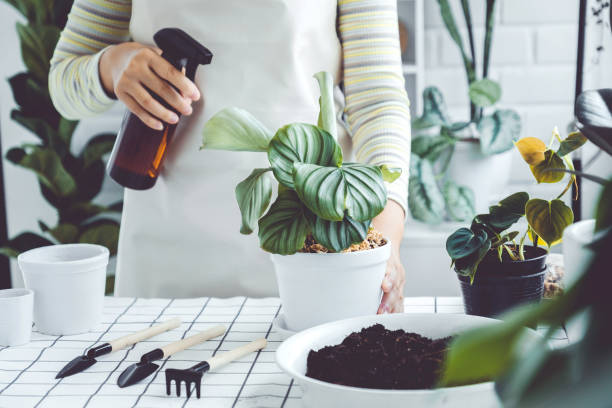Rubber plants, also known as Ficus elastica, are popular houseplants that are loved for their large, glossy leaves and air-purifying abilities. These plants are native to Southeast Asia and can grow up to 100 feet tall in their natural habitat. However, as a houseplant, a rubber plant can be easily maintained at a smaller size with proper care. Here are some tips to help you keep your rubber plant healthy and thriving.
Light
Rubber plants require bright, indirect light to grow and flourish. Direct sunlight can burn the leaves, so it’s best to place your rubber plant in a location that receives plenty of natural light but is shielded from the sun’s rays. If you notice that the leaves of your rubber plant are starting to turn yellow, it may be an indication that it’s not receiving enough light.
Watering
Rubber plants prefer to be kept on the drier side, so it’s important not to overwater them. Allow the soil to dry out completely between waterings and then water thoroughly, making sure that the excess water drains away. In general, you should water your rubber plant about once a week during the growing season (spring and summer) and then cut back to once every two weeks during the winter months.
Soil
Rubber plants prefer well-draining soil that is rich in nutrients. You can use a commercial potting mix or create your own by combining equal parts of potting soil, perlite, and sand. It’s important to make sure that the soil is loose and airy to allow for proper drainage.
Fertilizing
Rubber plants benefit from regular fertilization, which helps to promote healthy growth and vibrant leaves. You can use a balanced fertilizer, such as a 10-10-10 or 20-20-20 formula, and apply it once a month during the growing season. It’s best to stop fertilizing your rubber plant during the winter when it is dormant.
Humidity
Rubber plants thrive in humid environments, and they will appreciate a little extra moisture in the air. You can increase the humidity around your rubber plant by misting the leaves with water, placing a tray of water near the plant, or using a humidifier. This can help to prevent the leaves from becoming dry and brown.
Pruning
Rubber plants benefit from occasional pruning, which helps to promote bushier growth and prevent the plant from becoming too leggy. You can trim back the stems and leaves as needed, making sure to use sharp, clean scissors or pruning shears. It’s important to remove any dead or damaged leaves as soon as possible to prevent the spread of disease.
Propagation
Rubber plants are relatively easy to propagate, and you can use stem cuttings to create new plants. To propagate your rubber plant, simply cut a stem that is 6-8 inches long and remove the leaves from the bottom half of the stem. Place the cutting in a jar of water and change the water every few days. Once the cutting has developed roots, you can plant it in a pot with well-draining soil.
In conclusion, rubber plant care is relatively straightforward, and these plants are a great choice for anyone who wants a low-maintenance houseplant that can add a touch of tropical flair to their space. Just remember to provide your rubber plant with bright, indirect light, water it sparingly, fertilize it once a month during the growing season, and prune it as needed.
With a little bit of care, your rubber plant should continue to thrive and bounce back for years to come.

